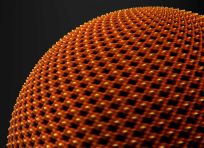
Center for NanoBiotechnology and University of Natural Resources and Applied Life Sciences, Gregor Mendel St. 33, A-1180 Wien, Austria
e-mail: ultra@boku.ac.at

 |
Uwe B. Sleytr, Dietmar Pum, Carina Huber, Bernhard Schuster, and Margit Sára
Center for NanoBiotechnology and University of Natural Resources and Applied Life Sciences, Gregor Mendel St. 33, A-1180 Wien, Austria e-mail: ultra@boku.ac.at |
 |
One of the key challenges in nanobiotechnology is the utilization of self-assembly systems, wherein molecules spontaneously associate into reproducible aggregates and supramolecular structures. In this contribution we describe the basic principles of crystalline bacterial surface layers (S-layers) and their use as patterning elements.
The broad application potential of S-layers in nanobiotechnology is based on the specific intrinsic features of the monomolecular arrays composed of identical protein or glycoprotein subunits. Most important physicochemical properties and functional groups on the protein lattice are arranged in well-defined positions. Many applications of S-layers depend on the capability of isolated subunits to recrystallize into monomolecular arrays in suspension or on suitable surfaces (e.g. polymers, metals, silicon wafers) or interfaces (e.g. lipid films, liposomes).
S-layers also represent a unique structural basis and patterning element for generating more complex supramolecular structures involving all major classes of biological molecules (e.g. proteins, lipids, glycans, nucleic acids or combinations of that). Thus, S-layers fulfil key requirements as building blocks for the production of new supramolecular materials and nanoscale devices as required in molecular nanotechnology, nanobiotechnology, and biomimetics.